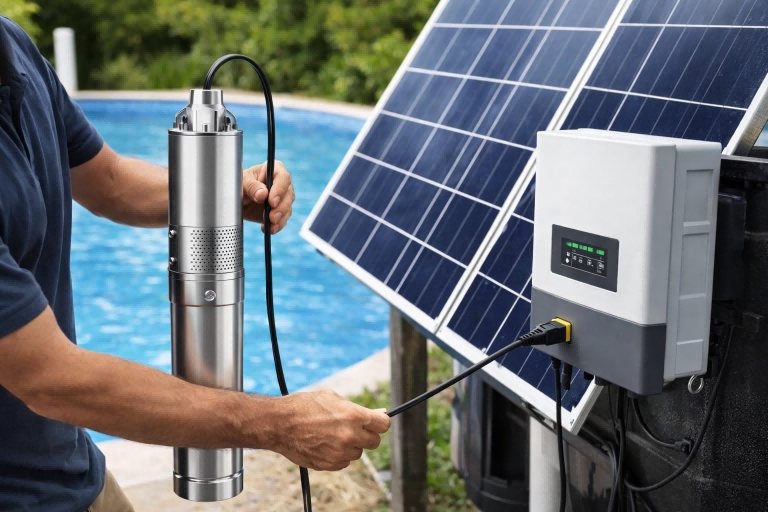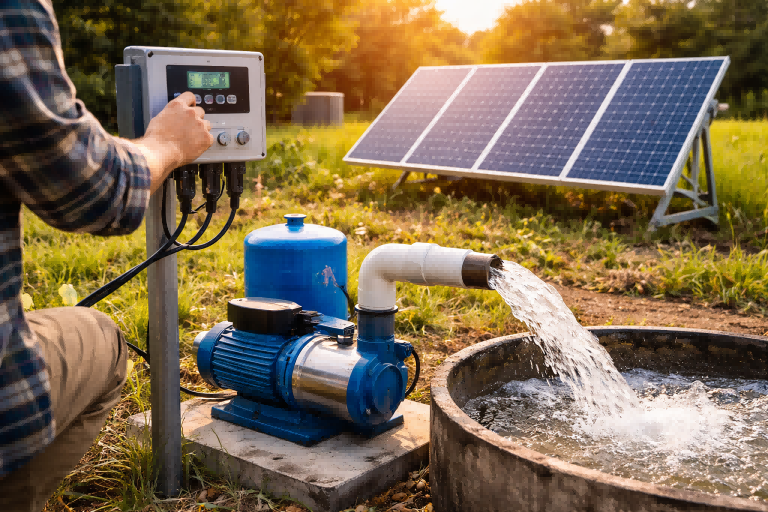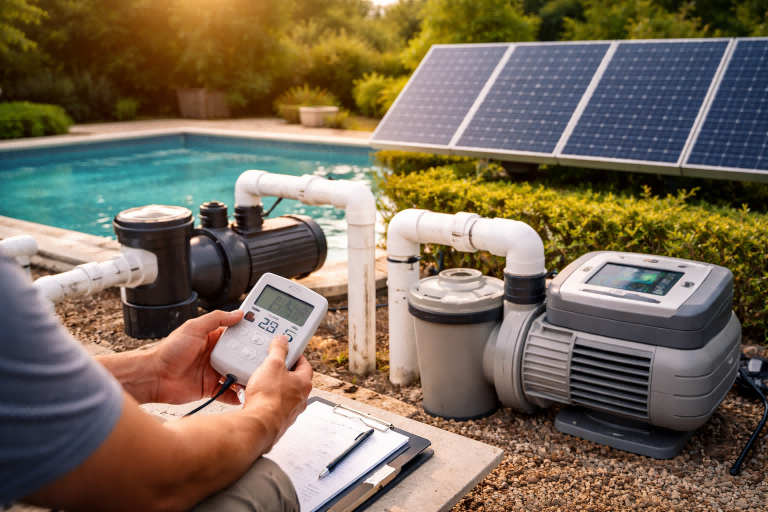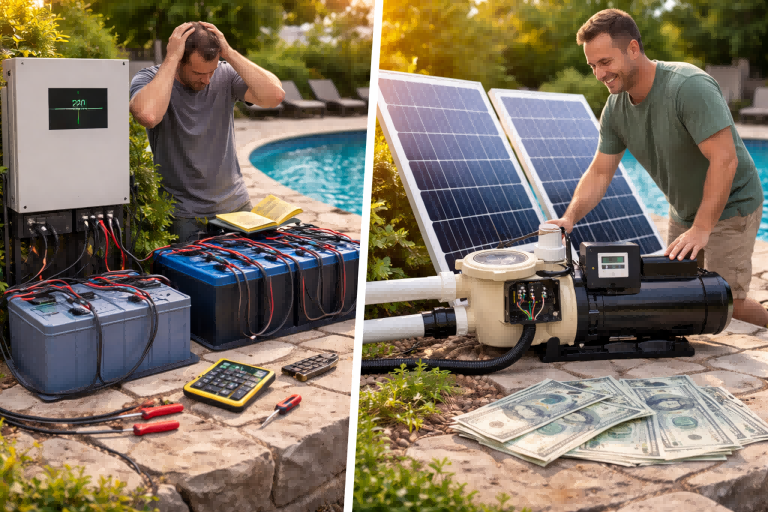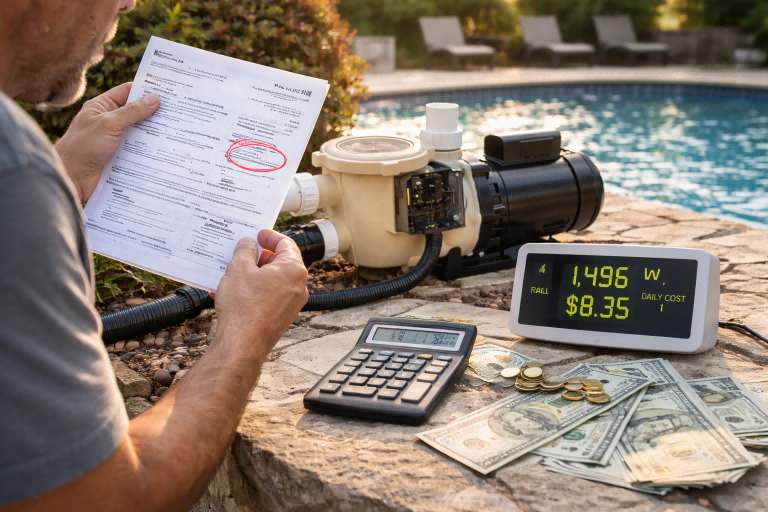Struggling with inconsistent water pressure or pump protection?
An unprotected pump system is vulnerable to weather and damage, leading to costly failures and unreliable water supply.
A dedicated pump house solves this.
A water pump house is a specially designed shelter or building. Its primary purpose is to house and protect water pumps and their associated equipment. This includes controls, pipes, and electrical systems that manage a water supply.
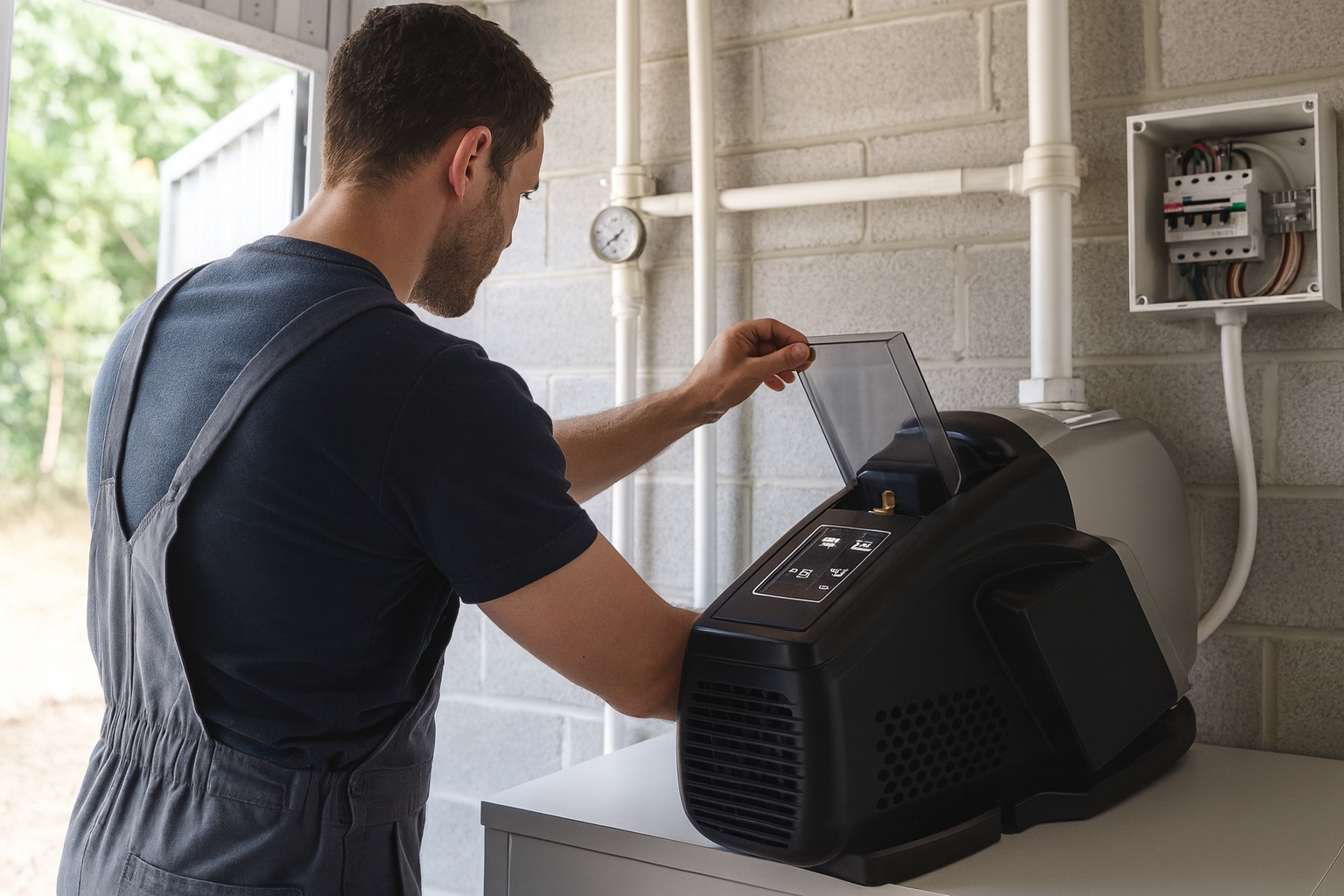
This structure is more than just a shed.
It is a critical piece of infrastructure that ensures your entire water system runs efficiently, reliably, and safely.
Understanding its components and function is key to maintaining a robust water supply for any application, from a small home to a large industrial facility.
Let's explore the essential elements that make up a functional and effective pump house.
What are the key components of a pump house?
Are you worried about the complexity of a pump house setup?
Juggling pumps, pipes, and electricals can seem overwhelming, risking improper installation and poor performance.
A simple breakdown demystifies the setup.
Key components include the water pump itself, control panels, piping, valves, and a pressure tank. Proper electrical wiring, ventilation, and a concrete foundation are also essential for safety and longevity. These elements work together to create a functional system.
Diving deeper, each component plays a specific role that contributes to the overall effectiveness of the water system.
A well-designed pump house organizes these parts logically for easy access, maintenance, and optimal operation.
Failure to account for any of these components can lead to system inefficiencies, premature equipment failure, and potential safety hazards.
Let's break down these parts to understand their individual functions and how they integrate.
The Heart of the System: Pumps and Motors
The most critical component is, of course, the water pump.
The choice of pump depends entirely on the application.
This could range from a small booster pump for a home to a large multistage centrifugal pump for a commercial building.
Attached to the pump is the electric motor, which provides the power to drive it.
Modern systems often use advanced pumps like those with Variable Speed Drives (VSD).
These are not your standard on/off pumps.
A VSD pump, also known as an inverter booster pump, adjusts its speed automatically.
This ensures it delivers constant pressure regardless of demand.
This technology significantly reduces energy consumption and mechanical stress.
The Brains: Control Systems
The control panel is the brain of the operation.
It houses the electrical components that manage the pump.
This includes starters, circuit breakers, and, in advanced setups, the Variable Frequency Drive (VFD).
A VFD controller intelligently manages the pump's speed.
It receives signals from pressure sensors in the system and adjusts motor speed accordingly.
This smart management prevents the pump from running at full power unnecessarily, saving energy and extending the pump's life.
| Control Component | Function | Benefit |
|---|---|---|
| Circuit Breaker | Protects the system from electrical overloads. | Prevents motor burnout and fire hazards. |
| VFD/VSD Controller | Modulates pump speed to match water demand. | Energy savings, constant pressure, reduced wear. |
| Pressure Sensor | Monitors water pressure in the pipes. | Provides real-time feedback to the VFD. |
| User Interface | Allows for system monitoring and adjustments. | Provides control and diagnostic information. |
The Skeleton: Piping, Valves, and Tanks
A network of pipes and valves forms the skeleton of the system.
Inlet piping brings water from the source (like a well or municipal line) to the pump.
Outlet piping, or discharge piping, carries the pressurized water to its destination.
Valves are crucial for controlling the flow of water.
Check valves prevent backflow, ensuring water only moves in one direction.
Isolation valves allow sections of the system to be shut off for maintenance without draining everything.
A pressure tank is another vital component, especially in systems without a VSD.
It stores a reserve of pressurized water.
This reduces how often the pump needs to cycle on and off, which saves energy and reduces wear on the motor.
In VSD systems, a smaller pressure tank is still often used to dampen pressure fluctuations and provide a smoother response.
Why is a pump house so important?
Think a pump can just sit out in the open?
Exposing expensive pump systems to rain, sun, and dirt leads to rust, electrical shorts, and rapid deterioration.
This neglect guarantees premature failure.
A pump house is essential protection.
A pump house is critically important because it protects valuable equipment from weather, theft, and vandalism. It also provides a safe, controlled environment for maintenance and ensures the system operates efficiently and reliably, extending its lifespan significantly.
Beyond simple protection, a well-built pump house offers numerous advantages that directly impact your bottom line and operational peace of mind.
It is an investment in the longevity and stability of your entire water infrastructure.
From enhancing safety to simplifying repairs, the benefits are clear.
Let's examine the specific reasons why skipping this structure is a false economy.
Protection from the Elements
The most obvious function of a pump house is to shield the equipment.
Pumps, and especially their electronic controls, are not designed to withstand direct exposure to the elements.
Rain and Moisture: Water can cause electrical shorts in control panels, VFDs, and motor connections.
It also accelerates rust and corrosion on the pump casing and metal fittings.
Sun and UV Exposure: Direct sunlight can degrade plastic components, wiring insulation, and protective coatings over time.
Excessive heat buildup can cause motors and electronics to overheat, leading to shutdown or permanent damage.
Dust and Debris: Dirt, leaves, and other debris can clog cooling fans on motors.
This leads to overheating.
Abrasive dust can also work its way into bearings and seals, causing premature wear.
A pump house creates a clean, dry environment that mitigates all these risks.
Security and Safety
Pump systems can be expensive.
Leaving them in an unsecured location makes them a target for theft or vandalism.
A locked pump house provides a necessary layer of security.
It also enhances safety for personnel and the public.
It prevents unauthorized access to high-voltage electrical components and moving parts.
This is especially important in public or commercial settings.
A secure enclosure prevents accidental contact and reduces liability.
Simplified Maintenance and Operation
Working on a pump in the rain or scorching sun is difficult and unsafe.
A pump house provides a sheltered, well-lit space for maintenance and repairs.
This makes the job easier, faster, and more thorough.
Proper design includes leaving adequate space around the equipment for technicians to work comfortably.
This consideration is crucial for tasks like:
- Checking for leaks
- Servicing the motor
- Replacing seals or bearings
- Accessing the control panel
Effective organization within the pump house keeps everything accessible.
When a technician can easily reach every valve and connection, troubleshooting becomes much simpler.
Noise Reduction
Pumps, especially larger ones, can generate significant noise.
Locating the pump system inside an insulated structure can dramatically reduce the sound level.
This is a major benefit for residential installations or facilities located near offices or other quiet areas.
A quieter operation improves the living or working environment for everyone nearby.
What are the different types of pump houses?
Wondering if one size fits all for pump houses?
Choosing the wrong type of enclosure can lead to overheating, maintenance issues, or inadequate protection for your specific climate.
It's a costly mistake.
The right design is crucial.
Pump houses vary from simple, small enclosures for a single well pump to large, walk-in buildings for complex commercial systems. They can be above-ground structures, partially buried vaults, or even prefabricated skid-mounted units for portability and quick deployment.
The type of pump house you need depends on several key factors.
These include the size and complexity of your pump system, your geographic location and climate, and your budget.
Each design offers a different balance of protection, accessibility, and cost.
Understanding these options helps you make an informed decision that aligns with the specific demands of your water system.
Above-Ground Buildings
This is the most common type of pump house.
It is a standalone structure, similar to a small shed or a larger utility building.
Materials can range from wood and metal to concrete blocks.
Advantages:
- Excellent Accessibility: Provides ample space for maintenance and repairs.
- Good Ventilation: Easier to install windows, vents, or fans to manage heat.
- Flexible Design: Can be built to any size or specification.
Disadvantages:
- Larger Footprint: Requires more ground space.
- Visual Impact: Can be an eyesore if not designed carefully.
Above-ground buildings are ideal for larger systems, such as those for commercial properties, irrigation, or municipal water supply.
They offer the best protection and easiest access for complex setups involving multiple pumps, large tanks, and sophisticated control systems like VFDs.
Underground Vaults
A pump vault is an underground or partially buried structure, typically made of precast concrete.
The pump and equipment are located below ground level, with an access hatch at the surface.
Advantages:
- Minimal Visual Impact: Most of the structure is hidden from view.
- Natural Insulation: The surrounding earth provides protection from extreme temperatures, both hot and cold.
- Enhanced Security: More difficult for unauthorized individuals to access.
Disadvantages:
- Limited Access: Maintenance can be difficult in a confined, underground space.
- Flood Risk: Prone to flooding if not properly sealed and drained.
- Ventilation Challenges: Requires specialized ventilation to prevent moisture buildup and heat accumulation.
Vaults are often used in situations where space is limited or aesthetics are a primary concern, such as in landscaped parks or high-end residential developments.
Skid-Mounted and Prefabricated Units
This modern approach involves assembling the entire pump system on a single steel frame, or "skid."
This includes the pump, motor, control panel, and all necessary piping and valves.
The skid can then be placed within a prefabricated, weather-proof enclosure.
This creates a complete, self-contained "pump package."
| Feature | Description | Benefit for Importers/Distributors |
|---|---|---|
| Integrated System | Pump, VFD, and controls are pre-wired and pre-plumbed. | Reduces on-site installation time and complexity. |
| Factory Tested | The entire package is tested as a system before shipping. | Guarantees performance and reduces failure risk. |
| Portability | Easy to transport and position on-site with a crane or forklift. | Simplifies logistics and project deployment. |
| Scalability | Standardized designs can be ordered to meet specific flow rates. | Easier to stock and sell standardized solutions. |
These packaged systems are extremely popular in the B2B market.
For a distributor like "Andrew" in Australia, offering a pre-engineered, factory-tested solution is a major selling point.
It provides his customers with a reliable, plug-and-play system that minimizes local labor costs and installation errors.
How do you design a pump house?
Planning to build a pump house without a blueprint?
A poorly designed space leads to overheating pumps, inaccessible valves, and a maintenance nightmare.
This lack of foresight causes long-term operational headaches.
Proper design is non-negotiable.
A good pump house design prioritizes a solid foundation, adequate space for equipment and maintenance, and proper ventilation. You must also consider electrical safety, drainage to prevent flooding, and easy access for personnel and equipment replacement.
A successful pump house design is a balance of foresight and practicality.
It's not just about building four walls and a roof.
It's about creating a functional environment that protects your investment and ensures the system can be managed effectively for years to come.
Thinking through each element of the design process is crucial to avoid costly retrofits and operational problems down the road.
Let's walk through the key considerations.
Foundation and Flooring
Everything starts with a solid foundation.
A poured concrete slab is the standard and best practice.
It provides a stable, level surface to mount the pumps, preventing vibration and movement.
The slab should be thick enough to support the weight of all equipment, including a water-filled pressure tank.
The floor should be sloped gently towards a floor drain.
This is a critical detail.
Pumps and pipes can leak.
Routine maintenance can involve draining parts of the system.
A floor drain ensures any water is safely removed from the building, preventing slips, electrical hazards, and moisture damage.
Sizing and Layout
One of the most common mistakes is making the pump house too small.
You must plan for enough space to not only fit the equipment but also to work on it.
Three-Foot Rule
A good rule of thumb is to leave at least three feet (about 1 meter) of clear space around each major piece of equipment.
This includes the pump, motor, pressure tank, and control panel.
This space allows for:
- Easy visual inspection.
- Access for tools during repairs.
- Room to remove and replace a component if it fails.
- Safe clearance from electrical panels.
When planning the layout, think about the workflow.
The control panel should be near the door for easy access.
Heavy components like the pump and tank should be positioned where they can be moved with a dolly or hand truck if replacement is needed.
Ventilation and Climate Control
Pumps and VFDs generate heat.
Without proper ventilation, the temperature inside a pump house can rise to dangerous levels, causing equipment to overheat and fail.
Passive Ventilation: For smaller systems, cross-ventilation using screened louvers on opposite walls may be sufficient.
Active Ventilation: For larger systems or hot climates, a thermostatically controlled exhaust fan is essential.
The fan automatically turns on when the internal temperature exceeds a set point, pulling hot air out and drawing cooler air in.
In cold climates, heating is just as important.
You must prevent the water in the pumps and pipes from freezing, which can cause catastrophic damage.
A small, thermostatically controlled heater can keep the ambient temperature above freezing.
Insulating the walls and roof is also crucial in both hot and cold climates to make heating and cooling more efficient.
| Climate Consideration | Design Solution | Purpose |
|---|---|---|
| Hot Climate | Insulated walls, roof vents, exhaust fan. | To dissipate heat from motors and electronics. |
| Cold Climate | Insulated walls, thermostatically controlled heater. | To prevent water from freezing in pipes and pumps. |
| Humid Climate | Good cross-ventilation, dehumidifier if needed. | To prevent condensation and moisture damage to electronics. |
How do modern VSD pumps impact pump house design?
Are you still using old, fixed-speed pumps in your projects?
Constant-speed pumps are inefficient, noisy, and cause pressure fluctuations, leading to higher energy bills and unhappy end-users.
They are outdated technology.
Modern VSD pumps are the solution.
Modern VSD pumps make pump houses smarter and more efficient. Their quiet, compact design and integrated controls can reduce the required footprint. However, their advanced electronics demand a clean, dry, and well-ventilated environment to prevent overheating and ensure reliability.
The shift from traditional pumping systems to intelligent Variable Speed Drive (VSD) technology has a significant impact on how we design and utilize pump houses.
These smart pumps, like the ones we at RAFSUN specialize in, are more than just a component; they are the core of a modern water management system.
Integrating them effectively requires a forward-thinking approach to pump house design.
It's about creating an environment where this advanced technology can thrive.
Reduced Noise and Vibration
One of the most noticeable benefits of a VSD pump is its quiet operation.
Unlike fixed-speed pumps that slam on at full power, VSD pumps ramp up and down smoothly.
This soft-start function dramatically reduces noise and vibration.
Design Impact:
- Less Need for Soundproofing: While some insulation is still good for thermal control, extensive and expensive sound-dampening materials are often no longer necessary.
- Location Flexibility: A quieter system means the pump house can be located closer to residential or office spaces without causing a disturbance.
This makes VSD booster pumps an ideal solution for applications where noise is a major concern, such as in apartment buildings, hotels, and hospitals.
Heat Dissipation for Electronics
The "brains" of a VSD pump is the Variable Frequency Drive (VFD), a sophisticated piece of power electronics.
Like all electronics, VFDs generate heat during operation.
While the pump itself may run cooler and quieter, the VFD controller needs careful thermal management.
VFD Cooling Requirements
- Airflow is Critical: VFDs have built-in cooling fans and heat sinks. The pump house design must ensure an unobstructed flow of cool, clean air to the unit.
- Temperature Limits: Most VFDs have an optimal operating temperature range. Exceeding this limit can cause the drive to derate (reduce its power output) or shut down completely to protect itself.
- Clean Environment: Dust and moisture are the enemies of electronics. A pump house for a VSD system must be kept cleaner than one for a simple mechanical pump.
The design must prioritize robust ventilation.
A thermostatically controlled exhaust fan should be considered standard, not optional, for any pump house containing a VFD.
Space and Integration
Modern VSD booster pumps are often highly integrated and compact.
For example, many of our RAFSUN intelligent pumps combine the pump, motor, VFD, and pressure sensor into a single, compact unit.
| Feature | Design Implication | Benefit for Installer |
|---|---|---|
| All-in-One Design | Less space needed compared to separate components. | Simplifies layout and can reduce the overall pump house size. |
| Integrated Controls | The VFD is mounted directly on the motor. | Eliminates the need for a large, separate control cabinet. |
| Digital Interface | Built-in screen for setup and diagnostics. | Panel can be smaller; no need for bulky gauges or switches. |
This integration can lead to a smaller, more cost-effective pump house.
However, you still must follow the "three-foot rule" to ensure there is adequate space for servicing the unit.
The simplified wiring (power in, power out) means less complex and bulky electrical panels are needed, further saving space and installation time.
This makes it an attractive package for distributors selling to contractors who value efficiency and ease of installation.
Conclusion
A well-designed pump house is not an expense.
It is a vital investment that protects your equipment, ensures reliable operation, and provides a safe environment for maintenance.
FAQs
What is the purpose of a pump house?
The main purpose is to protect the water pump and its electrical components from weather, theft, and damage. It also provides a safe, controlled space for maintenance.
What is the difference between a pump house and a well house?
A well house is a specific type of pump house built directly over a wellhead. A pump house is a more general term for any structure that houses a pump system.
How big should a pump house be?
It should be large enough to house all equipment with at least three feet of clear workspace around each major component, such as the pump, tank, and control panel.
Does a pump house need to be heated?
In cold climates, yes. A heater is essential to prevent the water inside the pump and pipes from freezing, which can cause severe damage and costly repairs.
Does a pump house need ventilation?
Absolutely. Ventilation is critical to remove heat generated by the pump motor and electronic controls, like a VFD, preventing overheating and equipment failure.
How high should a pump house be?
The ceiling should be high enough to allow for comfortable access and movement during maintenance, and to potentially lift or hoist heavy components if they need replacement.
Can you put a pressure tank in a pump house?
Yes, a pressure tank is a common and essential component in many pump house setups. The design must account for its size, weight, and required plumbing connections.
What kind of floor should a pump house have?
A sloped concrete slab with a floor drain is the ideal foundation. It provides a stable base, manages potential leaks, and ensures a safe, dry environment.


